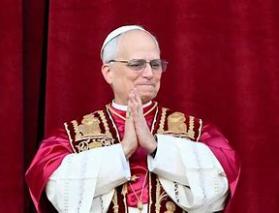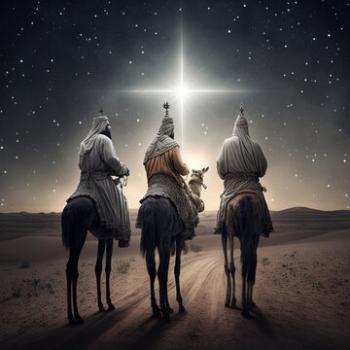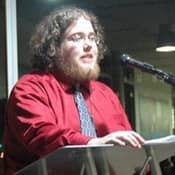The only sound is a cowbell.
The room is dark and crowded: twenty or more people were piled into a room that's less than ten-foot square and includes, besides them, the bulk of an altar and an upright piano. There were candles lit during the casting of the circle and the elemental invocations, but they're gone now. Now there is nothing but the warmth of flesh pressed against flesh, and puzzle of the room's black air, and a cowbell's lonely clang.
Occasionally, someone feels a sharp prod in their side, a cow's horn. They yelp, and the circle erupts in nervous, loving laughter.
I stand in the middle of the circle, telling the story of Hathor, the great triple goddess, told of at different times as Horus's maiden lover, or his mother, or transformed into Sekhmet, the Scourge of Ra, whose bloodlust had to be quelled with beer the color of human blood. As I tell the story, in the darkness of the circle, she manifests—in maiden's giggles, in crone's snarls, in gentle tones of the cowbell.
It's Candlemas, and we are in Sarah's parents' living room performing our fourth sabbat ritual together. This is the first one we have done in the dark—the first one where I could not see a script, could not retreat into the safety of prepared speeches. I told the myths from memory, like an oral storyteller of old, and hoped I told them well enough.
In the darkness, we cannot see Hathor; in the darkness we know she is there.
When the ritual is over, and we have retreated to the kitchen to finish preparing the feast, I make a note to myself: That worked. We'll remember that for Samhain.
You have to have a project, I think; some set of goals to focus your work, whether that work is magickal, artistic, mundane, whatever. Even if you're like me and most of your projects (sadly) end up not making it to completion, it's worth it to know that you at least had some plan for your efforts. To be a little more ethereal than I usually am in this column: if you're going to put energy out into the universe, you should probably do your best to tell that energy where to go. I embarked on such a project five years ago with my friend Sarah.
Now, I'm not certain how other covens handle their sabbats; I suspect many have their rituals handled by their high priest and priestess consistently. My coven handles it a little differently, since we hold our sabbats in conjunction with another coven (and an assortment of people who come to the sabbats but don't attend esbats with either coven regularly). As a result, every year the festivals are divvied up at Samhain to whomever volunteers.
Sarah and I had never held a ritual before. That first Lughnasadh was, for me anyway, strange, nervous, wonderful. We spent a few days in the library looking for inspiration in myths. We decided on our theme when we ran across a myth of Lugh none of us had seen before: the story of Lugh and his foster-mother Tailte, who would eventually lay down her life for his. It seemed like a good harvest metaphor to us, appropriate to the holiday. We also appreciated the fact that it was a myth about parents and their children, something that resonated with us second-generation kids.
We deliberately decided to make our rituals about specifics, rather than generalities: Lugh, not the "sun god." I had been to a more public ritual a few years before where the ritual described Ishtar's descent into the underworld and had never used her name. Instead they just called her "the Goddess," and in doing so, I felt, took away most of the character of the myth. (I don't want to start an argument here over "duotheism" versus "real polytheism" or anything like that; I just like my myths to have context.)
Our elders clapped when the ritual was over, told us we had done a great job. Part of me will always be suspicious that their reaction was similar to a parent putting their 5-year-old's artwork on the refrigerator, but it felt good anyway. I had already been initiated by the coven by that point, but that ritual was when I really felt like I had come into my own. (If you'd like a more poetic description of that ritual, read the piece I wrote for Killing the Buddha, "Lughnasadh.")
After that, Sarah and I decided to follow through with a full cycle of the sabbats, all done in a similar style to our Lughnasadh ritual: an exploration of a particular pagan mythology and ancestry, with devotions to particular gods. For me, this has been an exercise in wedding some of the impulses of reconstructionism—the focus on the particulars of a pantheon and its specific gods, putting the mythology central in the ritual, and so on—with a Wiccan framework.





